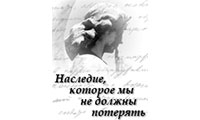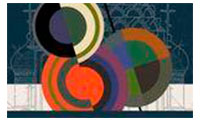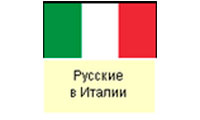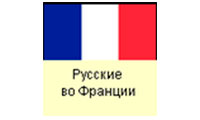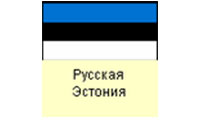The Old Believers of Riga
Arnold Podmazov
Iconographic Traditions of Riga Old Believers
Besides old manuscripts and books, Old Believers have always revered and highly valued icons. Old Believers have preserved many icons created before the church reform; they were handed over from generation to generation as family heritage or donated to the prayer houses. Since 18th century Old Believers founded their own iconography workshops where the painters continued the ancient Russian traditions of icon painting. This icon painting style has several distinctive characteristics that make it possible to recognize the manner of Old Believers’ icon painting. The guiding principle for the Old Believers’ iconographic tradition had been expressed by Andrey Denisov in Article 20 (Answer 50) “On the Holy Icons” of his “Pomorian Answers”. It contains a recommendation to paint icons in accordance with image and likeness of the “Greek and Russian” holy miracle-working icons, following the models provided by the old icon painters, rather than in accordance with “one’s own imagination, as do Latins and others, who use their own reasonings and do not follow the ancestral tradition”.
The Old Believers’ iconography reflect crucial aspects, essential to the nature of the “ancient Orthodoxy”. Every detail must be a witness to the ancient Orthodox faith. When depicting the sign of the cross or a blessing by the Lord or saints, the blessing with two fingers must be shown. Crucifixes and crosses that Saints hold in their hands on the icons, or which are depicted on the church domes, have to have three bars. In the “Pomorian Answers” it is stated that Christ, the Mother of God, and the Saints must be portrayed just as the ancient iconographers depicted them: in the manner of “reserved refinement”.
The Old Believers’ iconographers regard themselves as the followers of the Old Russian technique of iconography. In most cases, they paint on a specially prepared wooden board, a board with a hollow (kovcheg ‘ark’) that symbolizes the boundary between this and the heavenly world. Also, they use only tempera paints, rejecting the techniques of oil painting and mixed painting that became characteristic for the Russian icon painting after the 17th century.
Already in the beginning of the 19th century, the iconography workshop that existed under the aegis of the Riga Grebenshchikov Community was one of the well-known icon painting workshops in the Baltic region. Little study, however, has been done on a matter, which masters and in which workshops had painted icons for many Old Believers’ prayer homes throughout the Baltics in the course of the 18th and 19th centuries.
In the course of the 1920s and 1930s the Riga Grebenshchikov Community became an important center of icon painting. In 1928 an icon painting workshop was reopened due to the initiative of the famous icon painter Pimen Sofronov (1898–1973) and participation of the “Group of Zealots of the Ancient Russian Tradition” (1927–1940, founded and led by Ivan Zavoloko). The workshop’s labors had two main aspects: the restoration of the old monuments of iconography, and the revival of the ancient traditions of icon painting. Pimen Sofronov, a student of the outstanding Old Believers’ icon painter Gavriil Frolov (1854–1930), stood at the head of the Riga workshop between the years of 1928 and 1930. Among Sofronov’s students was icon painter Constantine Pavlov (1907–1976). In 1931 Sofronov moved to Paris and later to Prague. Afterwards he worked in Belgrade, Rome, and USA where he founded icon workshops. The Riga Grebenshchikov Community owns two unique icons by Sofronov: “Holy Hierarchs and Ecumenical Teachers Gregory the Theologian, Basil the Great, and John Chrysostom” (end of the 1920-ies) and “Holy Great Martyr Demetrius of Thessalonike” (1929).
Constantine Pavlov continued painting and restoring icons after his teacher’s departure from Riga. The well known images created by him for the Dormition Church of the Grebenshchikov Community are: the icon of Christ the Pantokrator (the plafond painting, 1958) and the icon “Theotokos at Prayer” (the end of the 1950s) at the entrance to the church.
Semyon Bikadorov (b. December 27, 1922) started to work in the Riga Grebenshchikov Community in the 1950s. He graduated from the Riga Janis Rozentals Art School (1948–1952) but in 1950s–60s he studied the foundations of the icon painting from Frolov’s student J. Kekishev (1892–1980). Additionally he studied the art of icon restoration from F. Kalikin (1876–1971), a collector of antiquities and an experienced restorer of icons who worked at the Hermitage and the Russian Museum in St. Petersburg. During his whole life as a professional restorer, for which he had undergone training at the Andrey Rublev Museum and at the Institute for the Restoration Research in Moscow, Bikadorov tried to preserve the icons painted in the old style and to carry on the ancient traditions of iconography in his own work. While in Riga, Bikadorov painted icons for the Old Believer churches in Latvia, as well as fulfilled private commissions. The icons authored by him – “Equal-to-the-Apostles Great Princess Olga” (1968), “St. Cyril of Catania” (1968), two icons of the Crucifixion (1969–1972) – are found in the church of the Riga Grebenshchikov Community, while the icons of the Deesis row (2000–2005) are found in the church of the Riga Theophany Community.
The work of Riga icon painters demonstrates that the Old Believer traditions of icon painting continues to evolve even in the 21st century, while preserving the traditions of ancient, 15th–17th century Russian iconography and the principles behind of the Old Believer iconographic style, which began in the workshops of the Vyg Community.
Content
- Introduction
- Schism and “Old Belief”
- Beginnings of the Old Believers on the territory of Latvia
- Confessional Characteristics of Old Believers in Latvia
- Old Believers’ Church Building and Liturgy
- Books and Book Culture
- Iconographic Traditions of Riga Old Believers
- Pomorian Old Believer Traditions of the Art of Copper Casting
- Old Believer Churches in Riga
- Old Believer Societies in Riga
- Old Russian Residents of Riga and Old Believers in the 18th century
- The Years of Prosperity and the Years of Misery: Riga’s Old Believers in the 19th Century
- Riga Old Believers at the Turn of 19th and 20th Centuries
- Riga Old Believers in the Independent Latvia (1918–1940)
- Riga Old Believers During the Soviet Period (1940–1941, 1944–1991)
- Riga Old Believers after the Restoration of Latvia’s Independence
- Photogallery
- About the Project. The Old Believers of Riga: 250 Years of Cultural Historical Experience



